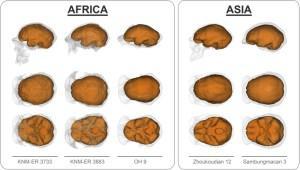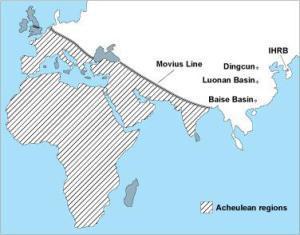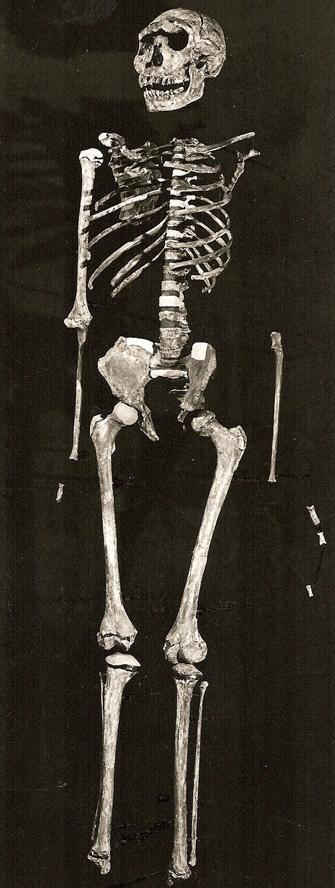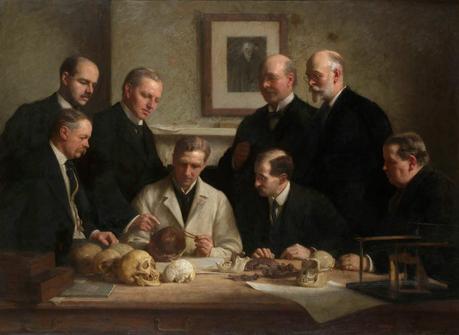It’s the human evolution weekly update; summing up the best human evolution discoveries for the week of the 17/11/14…and a bit before that as I’ve got a bit of a backlog. Being learning to drive instead of blogging you see. So clearly we have no time to waste, lets leap right into the action!
- Last year fossils from Dmanisi caused something of a stir, revealing that Homo erectus and Homo ergaster may actually have been the same species. And now a recent examination of their brains backs up this discovery, finding that the craniums of both groups were pretty similar (source).

Homo erectus brain casts from around the world
- Cultural change doesn’t always seem to follow a logical or consistent pattern. Why did Europeans discover the new world, but not vice versa? Why did some members of Homo erectus not adopt the advanced tools developed by other members of their species? It all seems a bit random and unpredictable…except it isn’t. Research into groups around the world suggests that cultural change can be predicted after all. Of course, the research doesn’t make any such predictions. That would be too useful (source).

The shaded area represents the region where Homo erectus made fancy tools.
- Since our ancestors started using tools our teeth have shrunk. Seems a bit weird right? Well, experimental archaeologists have confirmed that this is likely because they started using their stone tools as cutlery, preparing food so it would require less chewing (sawce).

The worlds first fork?
- Humans don’t have many physical adaptations. We aren’t strong or fast, but we do have one thing going for us: we’re great throwers. And new research has revealed that this ability may be much older than we thought, first appearing in Homo erectus almost 1.8 million years ago (would you like to know more?)

Daasanach man throwing a stick for the research into throwing
- Narikotome boy is a famously complete fossil of Homo erectus. As such it tends to be used in a lot of research. That throwing study I just talked about, for example, relied quite heavily on KNM-WT 15000 for data (and I didn’t have to look up that number, I’m so proud). However, he was around 14 years old when he died and already quite tall. Just how tall would he have grown? Palaeoanthropologists extrapolated based on both the ape and human model of growth and figured he could’ve easily reached around 6 foot tall (180cm) (source).

Narikotome boy
- And finally, this is a special week. It’s the 61st anniversary of the British Museum’s realisation that Piltdown Man was a hoax; more than 40 years after it was first discovered (sauce).

Painting of people studying Piltdown Man. I wish more research was presented in portrait form
- Cultural change doesn’t always seem to follow a logical or consistent pattern. Why did Europeans discover the new world, but not vice versa? Why did some members of Homo erectus not adopt the advanced tools developed by other members of their species? It all seems a bit random and unpredictable…except it isn’t. Research into groups around the world suggests that cultural change can be predicted after all. Of course, the research doesn’t make any such predictions. That would be too useful (source).

